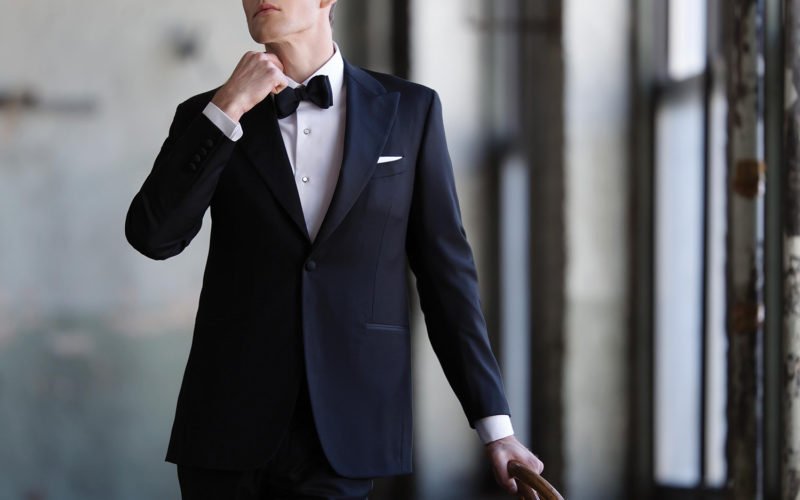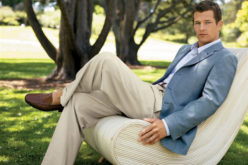Q. My wife and I are attending two upcoming weddings with specific dressing requirements. One invitation reads, “Black Tie Invited” and the other says, “ Creative Black Tie.” Can you help me understand what they mean and how I should dress to fit the request?
A. The terms “Black tie invited,” black tie optional,” and “creative black tie” all mean pretty much the same thing. That is, these additional words on the invitation allow more wiggle room than classic “Black Tie”– dressy and formal with minimal variations. In these cases, you are encouraged to veer off the straight and narrow as much as your individual style finds comfortable.
Since it’s a black-tie wedding, even with qualifiers, you’re expected to wear a tuxedo. It’s your safest bet. It is respectful for guests to honor that level of formality in their dress. The members of the wedding party will be wearing black-tie attire . . . almost certainly the traditional variety. This generally means a tuxedo and a formal dress shirt (one with pleats, French cuffs, and worn with elegant cuff links and studs), a bow tie (though not necessarily black), button-on suspenders (often referred to in better stores as “braces”) instead of a belt, formal black trousers with a ribbon stripe down the side of each leg made of the same fabric as the jacket’s lapel, and perhaps a vest if you’re going with a three-piece look. Guests are also expected to stick with darker colors, like navy and gray, and deeper jewel tones, like emerald, sapphire, and burgundy.
So, what are your traditional vs. “creative” options?:
- Traditional tuxedos and their accessories offer an array of alternative choices: Single- or double-breasted cut, peaked lapels or a shawl collar, satin or grosgrain trim, classic black or more fashion-forward navy blue color (or in summer perhaps a white formal dinner jacket with black formal trousers). A bow tie is essential.
- On the other hand, optional accessories may include a linen or silk pocket square, a cummerbund (with the pleats facing up), a real fresh flower boutonniere (not one of those fake plastic types), and, if the tuxedo is a three-piece style, be sure to leave the bottom button of the vest unfastened). Shoes should be black and shiny formal “pumps” with a traditional grosgrain bow, or dressy plain lace-ups (formal dressing is the only time a well-dressed man would wear patent-leather shoes.
- With this playful/creative sort of dress code, you have a good bit of flexibility for the accessories. Variations can be very eye-catching or quite subtle. You might choose a vest that contrasts, rather than matches, the rest of the tuxedo. Your cuff links might be larger and more whimsical than classic ones. You could also drape a white silk scarf around your neck. Socks and braces might be in bold designs and in bright colors. Even so, I urge you to avoid such high school prom additions as pastel colors, contrasting white or bright colorful trim on the tuxedo, or a ruffled shirt.
- And as I have previously stated about men’s clothing, an important rule is not to add too many noticeable or memorable variations and flourishes. Even when being creative, “tasteful restraint” is the sign of a well-dressed guy.
Evening clothes, of course, are generally worn at social events with women attending. I’ll tell you something you may not know. Like James Bond, every man looks wonderful – debonair, sexy, and in command – when he is in formal attire.
Please send your men’s dress and grooming questions to MALE CALL: Lois.Fenton@prodigy.net









